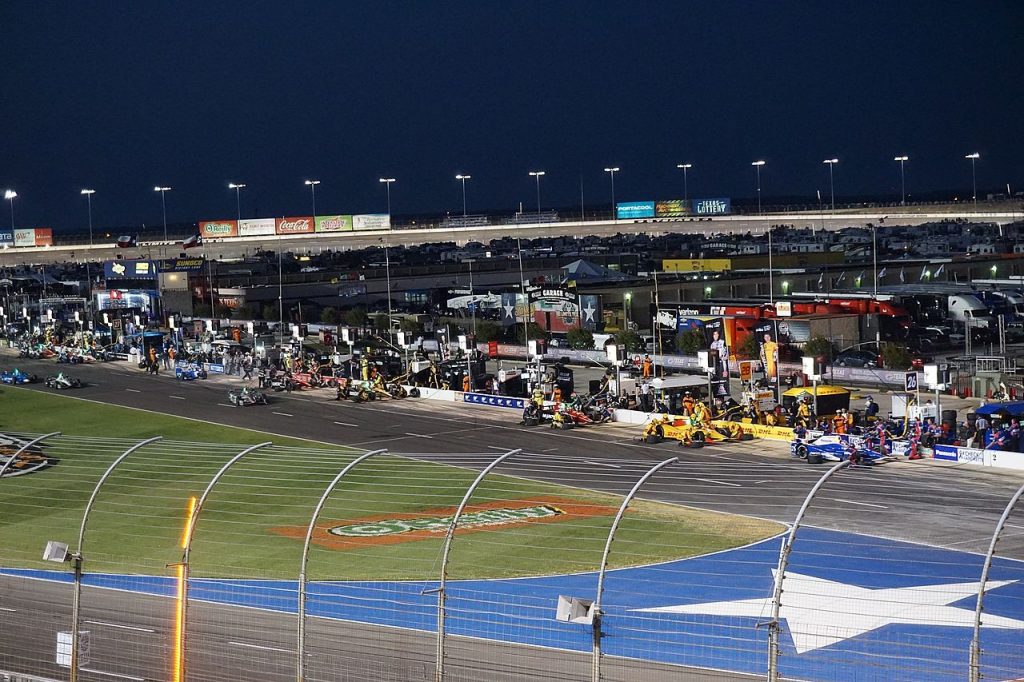
Races are major sports/entertainment events that deserve being televised at their very best. TV start times need to take a back seat once in a while to make sure they get the chance.
Last Saturday night’s short track IndyCar race at Iowa Speedway was delayed more than five hours due to thunderstorms. It was promoted as a night race, but the original start time was 6:20 p.m., about two and a half hours before darkness. The race only lasts two hours; it was never going to be a night race.
The race day forecast was for high heat and humidity, meaning a slippery track made worse by incompatible rubber left over from an ARCA race plus drivers looking directly into the sun during a large portion of the 170 mph laps.
The IndyCar 300 didn’t go green until just before midnight EST, severely hurting the TV ratings. The delay also impacted the crowd as many went home long before the command to start engines, doubting there would be any racing that evening. No one could blame them.
Race winner Josef Newgarden noted the late start, rain-washed track and cooler temperatures raised the grip level, increased downforce and boosted the horsepower. It was exactly what a night race is supposed to be. He loved it (naturally, he won and led the most laps). Other drivers agreed.
If a bona fide night race will be better as an entertainment product; if it starts later, when its actually dark at the track, should the entertainment level, safety and spectator experience be compromised so the broadcast can reach the largest possible audience?
There are seven U.S. standard time zones (Hawaii-Aleutian, Alaska, Pacific, Mountain Standard, Mountain Daylight, Central and Eastern) but honestly, TV is only concerned with the two where roughly half of the population resides; EST on the Atlantic coast and PST, on the Pacific coast.
Racing usually ramps up in early March and winds down in mid-November. That’s about when Daylight Saving Time translates to a three-hour local time difference between the right and left coasts.
And that’s how night races can become end-of-day races. Networks want to broadcast during prime time, which is defined as 8 – 11p.m. EST, because the eastern time zone represents almost 40% of potential viewers.
When sponsorship agreements and network contracts come into play its completely understandable for the dog to wag the tail a bit. The problem is when the tail starts wagging the dog; when the necessity of a prime-time broadcast window prevents the show being as good as it can be.
The solution? The networks agree to compromise and favor quality over quantity. Because if the quality is good, their audience will seek out the broadcast regardless of the time window.
For instance. The team behind Attesa is in Arizona and some of us get up way too early on weekend mornings to watch most F1 and MotoGP practices, qualifying and races. Same with Le Mans. Same with IndyCar when it used to race in Australia, Europe, Japan and South America.
Race fans will stay up late or rise before the roosters to watch racing, especially if the product is good.
Races that start during the hottest part of the day, subjecting drivers to blinding glare and spectators to unnecessary discomfort stack the deck against the race being as good as it can be.
And no, we’re not talking about a 600-mile NASCAR race, or any other race that’s going to last three hours or more. We’re really only talking about two (Iowa and Gateway), maybe three (if Richmond comes back next year) IndyCar races on ovals one mile or shorter; where the races shouldn’t last longer the two hours. Note: The 1995 200-mile CART race at PIR lasted an hour and a half; the star-crossed 2017 and 2018 IndyCar races at the same track lasted about 1 hr. and 45 minutes.
So, our take is this: If a series wants to hold a night race, it must BE a night race. The networks can handle it and the fans, particularly those who buy tickets, hot dogs, beers, soda and swag, will be annually grateful.
